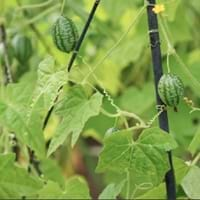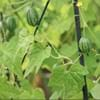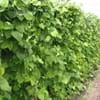Life Span
Annual
Perennial
Type
Vegetable
Flowering Plants, Fruits, Trees
Origin
Central America, Mexico
Central Asia
Types
Slicing, Pickling and burpless
Aceymac apple, Bailey Sweet apple, Dabinett apple, Nehou apple
Habitat
Floodplains, Wet forest
Hillside
USDA Hardiness Zone
7-8
5-8
Sunset Zone
A3, H1, H2, 1a, 1b, 2a, 2b, 3a, 3b, 4, 5, 6, 7, 8, 9, 10, 11, 12, 13, 14, 15, 16, 17, 18, 19, 20, 21, 22, 23, 24
A1, A2, A3, 8, 9, 10, 11, 12, 13, 14, 15, 16, 17, 18, 19, 20, 21, 22, 23, 24
Habit
Vining/Climbing
Oval or Rounded
Flower Color
Yellow, Gold
White
Flower Color Modifier
Bicolor
Not Available
Fruit Color
Green
Green, Red
Leaf Color in Spring
Light Green
Dark Green
Leaf Color in Summer
Green, Dark Green
Green
Leaf Color in Fall
Green, Dark Green, Yellow green
Brown, Green, Light Yellow
Leaf Color in Winter
Not Available
Not Available
Leaf Shape
Heart-shaped
Oblong
Plant Season
Summer, Fall
Spring
Sunlight
Full Sun, Partial Sun
Full Sun, Partial shade
Growth Rate
Very Fast
Medium
The pH of Soil
Neutral
Neutral
Soil Drainage
Well drained
Well drained
Bloom Time
Early Summer, Summer, Late Summer, Early Fall, Indeterminate
Fall, Summer
Tolerances
Drought
Drought
Where to Plant?
Container, Ground
Ground
How to Plant?
Seedlings, Stem Planting
Grafting, Seedlings, Transplanting
Plant Maintenance
Medium
Medium
Watering Requirements
Keep ground moist, Requires a lot of watering, Requires regular watering, Requires watering in the growing season
Medium
In Summer
Lots of watering
Lots of watering
In Spring
Moderate
Moderate
In Winter
Average Water
Average Water
Soil Drainage Capacity
Well drained
Well drained
Sun Exposure
Full Sun, Partial Sun
Full Sun, Partial shade
Pruning
Prune after flowering, Remove shoots
Prune when plant is dormant, Remove dead or diseased plant parts
Fertilizers
Compost, organic fertlizers
All-Purpose Liquid Fertilizer
Pests and Diseases
Bacteria wilt, Fungal Diseases, fungus, Fusarium wilt, Leaf spot, Striped cucumber beetles
Aphids, Canker, Caterpillars, Powdery mildew, Root rot
Plant Tolerance
Cold climate
Drought
Flower Petal Number
Single
Single
Foliage Texture
Coarse
Medium
Foliage Sheen
Matte
Matte
Attracts
Ants, Birds, Flying insects, Insects, Rats, Squirrels
Birds
Allergy
Throat itching, Vomiting
Mouth itching, Throat itching
Aesthetic Uses
Showy Purposes
Not Available
Beauty Benefits
Not Available
Not Available
Environmental Uses
Food for animals, Food for birds
Air purification
Medicinal Uses
Antioxidants, Combats Stress, Fiber, Improve heart health, Indigestion, Inflammation, Rich in Iron
Cancer, constipation, Diabetes, Diarrhea, Dysentry, Fever, Heart problems, Tooth ache
Part of Plant Used
Fruits, Seeds
Fruits
Other Uses
Used As Food, Used as Ornamental plant, Used for its medicinal properties
Used As Food, Wood is used for making furniture
Used As Indoor Plant
Yes
No
Used As Outdoor Plant
Yes
Yes
Garden Design
Edible, Herb / Vegetable, Vine
Fruit / Fruit Tree, Shade Trees, Showy Tree
Botanical Name
MELOTHRIA scabra
Malus domestica
Common Name
Mexican Sour Gherkins, cucamelon
Apple Tree
In Hindi
Mousemelon
सेब का वृक्ष
In German
Maus Melone
Apfelbaum
In French
Mousemelon
Pommier
In Spanish
Mousemelon
Manzano
In Greek
πεπόνι ποντίκι
μηλιά
In Portuguese
melão rato
Macieira
In Polish
mysz melona
jabłoń
In Latin
mouse melon
Arbore
Phylum
Tracheophyta
Magnoliophyta
Class
Magnoliopsida
Magnoliopsida
Order
Cucurbitales
Rosales
Family
Cucurbitaceae
Rosaceae
Clade
Angiosperms, Eudicots, Rosids
Angiosperms, Eudicots, Rosids
Tribe
Melothrieae
Not Available
Subfamily
Cucurbitoideae
Not Available
Number of Species
Not Available
Not Available
Importance of Mouse Melon and Apple Tree
Want to have the most appropriate plant for your garden? You might want to know the importance of Mouse Melon and Apple Tree. Basically, these two plants vary in many aspects. Compare Mouse Melon and Apple Tree as they differ in many characteristics such as their life, care, benefits, facts, etc. Every gardener must at least have the slightest clue about the plants he wants to plant in his garden. Compare their benefits, which differ in many ways like facts and uses. The medicinal use of Mouse Melon is Antioxidants, Combats Stress, Fiber, Improve heart health, Indigestion, Inflammation and Rich in Iron whereas of Apple Tree is Cancer, constipation, Diabetes, Diarrhea, Dysentry, Fever, Heart problems and Tooth ache. Mouse Melon has beauty benefits as follows: Not Available while Apple Tree has beauty benefits as follows: Not Available.
Compare Facts of Mouse Melon vs Apple Tree
How to choose the best garden plant for your garden depending upon its facts? Here garden plant comparison will help you to solve this query. Compare the facts of Mouse Melon vs Apple Tree and know which one to choose. As garden plants have benefits and other uses, allergy is also a major drawback of plants for some people. Allergic reactions of Mouse Melon are Throat itching and Vomiting whereas of Apple Tree have Mouth itching and Throat itching respectively. Having a fruit bearing plant in your garden can be a plus point of your garden. Mouse Melon has showy fruits and Apple Tree has showy fruits. Also Mouse Melon is not flowering and Apple Tree is flowering. You can compare Mouse Melon and Apple Tree facts and facts of other plants too.





